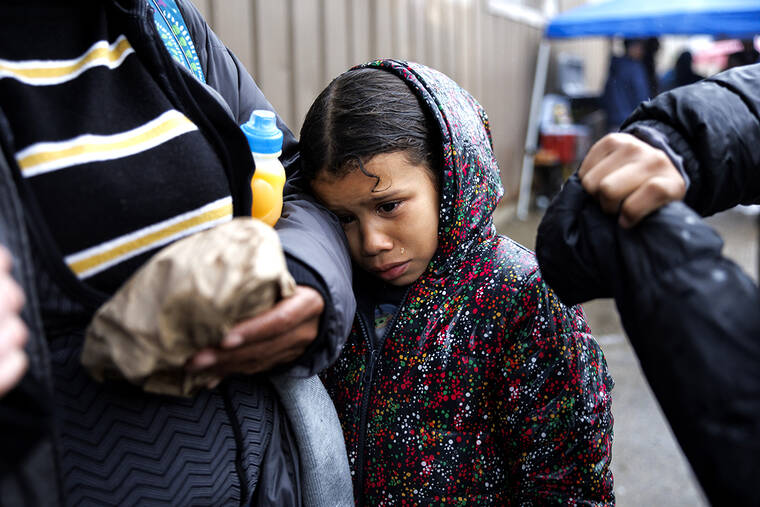Measles is making a comeback. Should we be concerned?
The Centers for Disease Control and Prevention has reported an uptick in the number of measles cases around the nation since early December. If the pace of infections continues to follow this trajectory, 2024’s total will top the surge reported in 2014 (667 cases), or even the 1,274 cases reported in 2019. Should we be concerned?
One perception among some people is that measles is just another innocuous infectious disease that children contract, characterized by fever and a rash. The actual risks to children in contracting measles are much greater.
The CDC reports that on the order of 1 to 3 in 1,000 infected children will die from respiratory and neurologic complications. To put this into perspective, if every child 1 to 4 years old became infected, and the mortality rate was 1 in 1,000 children, then around 14,000 of these children would die from the disease.
By comparison, around 3,800 children ages 1 to 4 die every year. The leading causes of death in this age group are accidents, genetic and developmental conditions present at birth, and homicides. Without protection against measles, the disease could quickly become the leading cause of death in this age group.
Yet deaths are just one measure of the impact of measles. Complications such as pneumonia, swelling of the brain (encephalitis) and the possibility of spending time in the hospital are risks that cannot be ignored.
The best protection is a safe and effective vaccine. It has been available for more than 60 years and served as the primary factor in a reduction in measles infections to levels that has kept children safe.
What makes controlling measles so challenging is its high transmission rate, as measured by R0, or “R naught,” its basic reproduction number. The R0 is the average number of people susceptible to acquiring a disease from a single infected person. The R0 for measles is estimated to be between 12 and 18, the highest among pediatric infectious diseases. This also means that high immunity rates typically achieved with vaccination, around 95%, are needed to achieve herd immunity for measles. By comparison, seasonal influenza has an R0 of around 1.3.
The good news is that anyone who has ever had measles or been vaccinated acquires lifelong immunity.
The question that parents must ultimately ask themselves is: How much risk are they willing to assume in not protecting their child against the measles?
The number of measles outbreaks around the nation continues to grow. The absolute number of cases remains small. The uncertainty is whether each such pocket will die out or expand and whether those infected traveling around the country will seed new infections that become outbreaks.
From an epidemiological point of view, the CDC can certainly track such infections. Yet people’s choices about vaccination for their children ultimately drive infection spread and outbreaks. In addition, many infections go unreported by those who choose not to vaccinate their children, unless the child becomes so ill that medical attention is required. (About 1 in 5 unvaccinated people in the U.S. who get measles end up being hospitalized.) This means that the figures the CDC is reporting are lower than the actual number of children who have been infected.
If a personal choice has no public impact, then people should certainly be afforded such freedoms. Yet when personal choices have public consequences, one must find the right balance between the two. That is why child care facilities and schools impose vaccination requirements. Without such safeguards, numerous infections would spread, affecting families and creating educational and public health chaos and risks.
As we saw during the COVID-19 pandemic, there are consequences when schools must be closed. Remote learning was adopted as a substitute, which was necessary given the uncertainty around the infection early in the pandemic. Yet time has shown that it was a poor substitute at best.
Lessons learned over time suggest that keeping children in school should be a top priority, and vaccination is the pathway to facilitate it. The measles outbreaks around the nation are a concern because they are a marker for risk. And unless risk is managed, it can grow and become untenable.
So the current measles outbreaks are indeed a concern. Appropriate information and guidance should be shared and communicated, so that what is now a small collection of infections does not grow into widespread disease that could affect susceptible children and adults.
The best protection is always preparation and prevention, since disease avoided is a win for all. Communication and trust define the pathway to secure such protections.
Sheldon H. Jacobson, Ph.D., is a professor of computer science at the University of Illinois at Urbana-Champaign. Dr. Janet A. Jokela, MPH, is the senior associate dean of engagement in the Carle Illinois College of Medicine at the University of Illinois at Urbana-Champaign.


